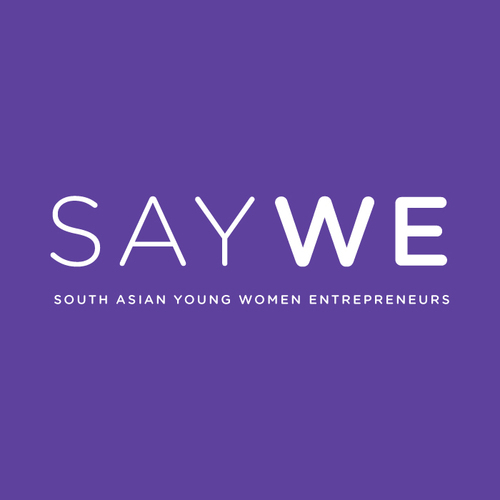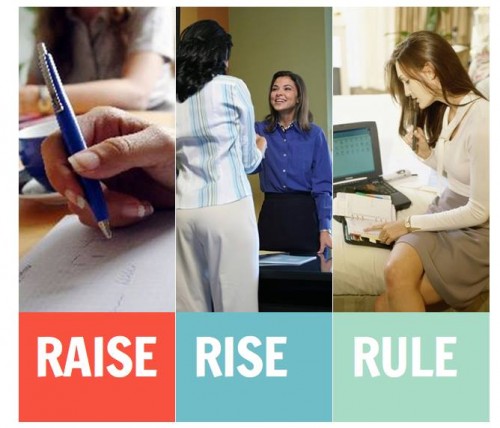
Information provided by Reema Rasol, founder of SouthAsianYoungWomenEntrepreneurs:
South Asian Young Women Entrepreneurs (SAY WE), a national network of business-minded executives in the fields of technology, finance, entertainment, and fashion, builds on its 2013 six-city-tour of financial education panels, “Making Dollars & Sense,” by hosting three full-day conferences, aimed to educating women business owners about finance, marketing, public relations and social media. The conferences, “Raise, Rise, Rule!,” are sponsored by founding partner Wells Fargo. They will kick off in May, also known as Asian Pacific Heritage Month and Small Business Awareness Month.
Subject-matter experts and entrepreneurs will discuss topics including, building your business credit, reinvesting in your business, protecting your credit score, creating relationships with business bankers, marketing your new business, reaching out to the media and implementing a social media strategy.
The conferences start in New York City on May 17, then in Houston on June 14 and lastly in the San Francisco Bay Area on August 9. For more information and to register, please visit www.saywe.us.

BG writers, including Trisha Sakhuja, Kamini Ramdeen, Sindhuri Bhi, Sneha Goud, Christine Varickamackal, Trisha Arora and Keertana Sastry, will attend the conference this Saturday at the The Condé Nast Building 4 Times Square in New York City. Our editor-in-chief Atiya Hasan will attend the conference in Houston! Join us by registering for this free conference now!
•11am: Welcome Remarks by Reema Rasool, Founder SAY WE, & Jane Navarria of Wells Fargo
•11:20am: Keynote Address by Aroon Shivdasani, Founder of Indo-American Arts Council, on the topic of ‘Scaling Your Ideas’
•12:00pm: Panel Discussion: “Making Dollars & Sense: Let’s talk money with successful entrepreneurs and financial advisors.” Panelists include: Sindhya V. Kalghatgi (founder Helix & Writer), Abbas Hashmi (founder of Green Card Capital & Investor), Pialy Aditya (co-founder Mintbox) Jane Navarria of Wells Fargo & Sital Patel (moderator & WSJ Market Watch journalist).
•1:00pm: Power Networking Lunch
•2:00pm: Panel Discussion: “Marketing strategies for your start-up: How to build awareness and land visibility for your company.” Panelists include: Adam Khan (Head of Digital Education, Loreal), Joya Dass (founder of Lady Drinks & documentary filmmaker), Parul Patel (CEO The Cake Designer), Ayesha Hakki (principal Bibi PR ), & Aarti Virani (Moderator & journalist).
• 3:00pm: Coffee/Tea & ‘Group Therapy’
• 4:00pm: Keynote Speaker, Faisal Hoque, Entrepreneur & Author on the topic of ‘Do You Have The Courage To Survive and Thrive as an Entrepreneur?’
Learn how to start, grow and run your #smallbiz at #SAYWE2014 NYC conference. Register here! http://t.co/FTZYL2EONb
— Wells Fargo (@WellsFargo) May 14, 2014
Reema said the goal of the conference is:
Part inspiration and part practical advice. #SAYWE2014 will be directly aimed at the unique challenges and issues faced by South Asian women entrepreneurs in the United States.”
As for how attendees should feel after the conference, Reema said,
All who attend this conference will definitely feel inspired, motivated and better informed on what it takes to be a successful entrepreneur.”
We have 2 panels throughout the day, one on ‘Making Dollars & Sense,’ financial advice for entrepreneurs and one on ‘Tricks of the Trade,” which is learning how to effectively market your products and services using public relations, social media and other non-traditional techniques.”We also have two key note speakers, including Aroon Shivdasani, founder of the Indo American Arts Council, who will speak on ‘Scaling Your Ideas’ and then we have Faisal Hoque, who is an entrepreneur and author. He will be the closing speaker on the topic of ‘Do you have the courage to survive and thrive as an entrepreneur.’ Everyone will also get an autographed copy of Faisal’s latest book, “Everything Connects.'”
Extremely important! One of the best parts about starting SAY WE is the network that we have developed over the past four years.”




